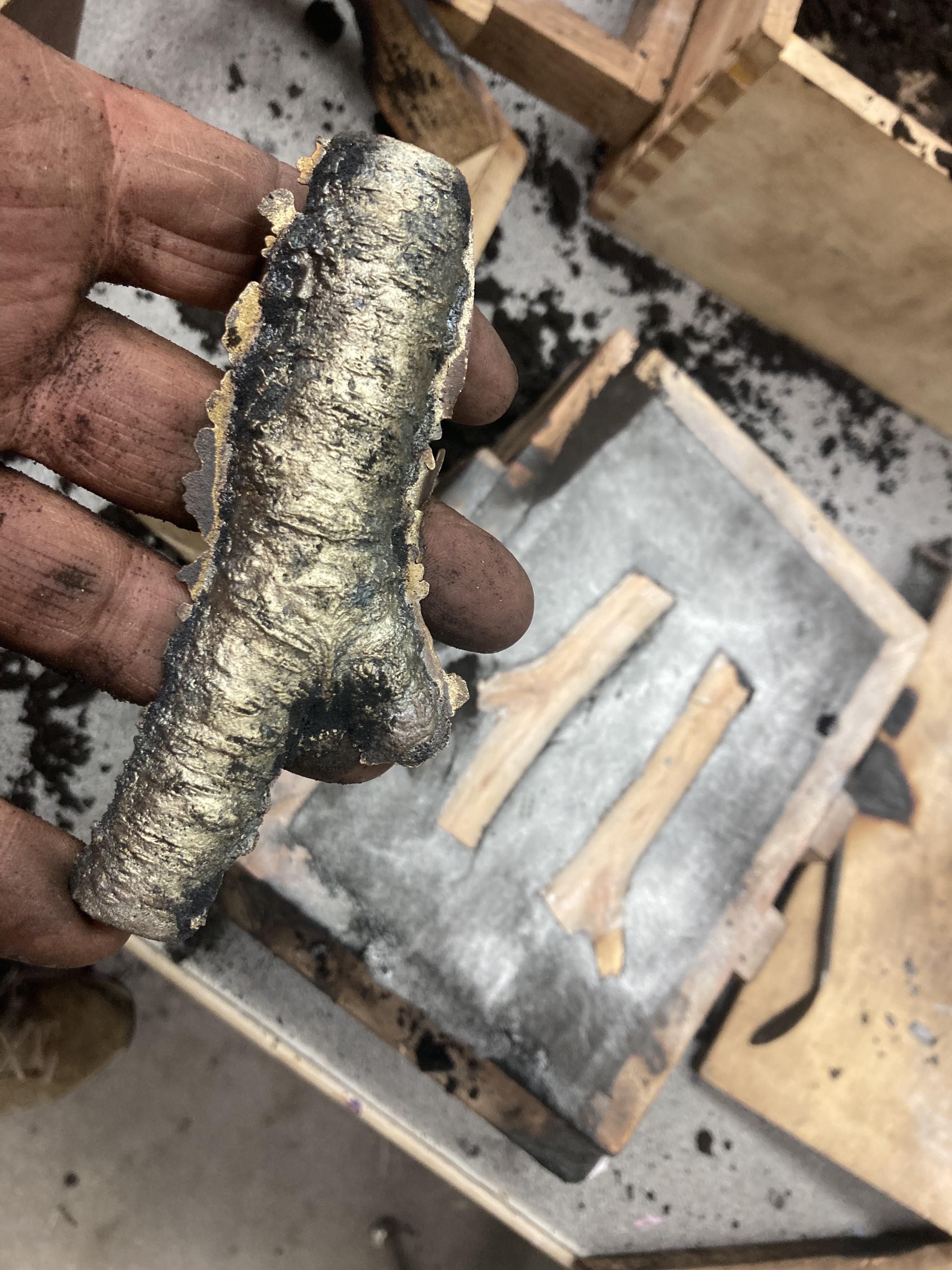Sand Casting
Contact
University of Arkansas System Division of Agriculture
Cooperative Extension Service
2301 S. University Ave.
Little Rock, AR 72204

Sand Casting
I’m frustrated. Stymied by the modern technology of push-button ignitions on my new Dodge Promaster van. It has sat in the shop for a month awaiting a software rewrite so the ignition will work correctly, so I have had to entertain myself by learning about an ancient technology: sand casting.
For a species that has colonized every corner of the globe and even moved into the void of space, we humans haven’t been around very long. Most of our prehistory is designated as the stone age when tools were crafted from rocks. In the late stone age, we began building with stone and establishing settlements that were supported by agriculture which is thought to have appeared about 10,000 years ago. About 6,000 years ago marks the beginning of the bronze age when the copper smelters of the late stone age discovered they could make a wonderful alloy – a mixture of two kinds of metals – by adding some molten tin to the copper.
Bronze smelting is generally considered to have started in Western Asia and the Eastern Mediterranean region. The bronze age lasted until about 1200 BC when the technology used to smelt bronze was modified so that the kilns could achieve the higher temperature (2,280 degrees F) needed to melt iron ore. Bronze melts at about 1,985 degrees F.
My journey back to the bronze age was led by Eugene Sargent, a multi-talented Northwest Arkansas artist teaching a six-week short course through the auspices of the Fayetteville Creative Center. Knowing nothing about bronze or sand casting, this has been an interesting experience. Plus, I have been able to cast some unique woodsy door pulls for my van Woody when, and if, it ever gets out of the shop.
Sand casting is a widely used technique in an industry with 60 percent of all molded metal products produced using this ancient craft. Modern car engine blocks are made from several hundred pounds of molten aluminum poured into a complicated sand casting setup.
To simplify things, I will describe the sand used in our casting class as looking like oily sand. It is mainly silica sand with a small amount (about 5 percent) of clay added and some oil to make the mixture easy to work yet compact tightly when pounded around the pattern.
The sand is fitted into a two-part mold box which is designed to separate cleanly in the middle, much like opening a book. The pattern – the object to be molded – is bedded into the bottom portion of the sand-filled mold box and pounded until the sand is firm. A parting dust – a talc-based powder that allows the two halves of the molding box to separate cleanly – is applied liberally to the pattern and the compressed sand. Then the second half of the box is added atop the first and additional sand is added and compacted.
After compaction of the top half of the mold box, it is gingerly lifted and set aside. The pattern is carefully removed from the bottom of the mold box and a gate system cut in the compacted sand so that the molten metal can access the hollow cavity that is left when the top half of the mold box is put atop the bottom portion of the box. The mold box is now ready to receive the molten metal.
We have poured aluminum (melting point about 1250 degrees F) and the much heavier bronze we are using which is a mixture of about 85 percent copper, 10 percent tin and 5 percent aluminum. Brass, an 85:15 alloy of copper and zinc, was not invented until about 30 BC. It was the wartime economy and the demand for brass shell casings that created the wealth around Joplin, Missouri and the Tri-State Mining district a century ago. Pewter – originally an alloy of low melting point metals tin and lead – is now made as an alloy of tin and aluminum.
The bronze age never reached the Americas. Gold and silver were widely mined by natives in the New World, but working these valuable metals is classified as a characteristic of “late stone age” cultures. Lead was first mined in the Ozarks beginning about 1780 with iron smelting beginning in the 1830s in Missouri. The zinc and lead mines of the western Ozarks began after the Civil War. Around 1900, bauxite was mined in central Arkansas and aluminum smelting was a big industry until the latter part of the century.
